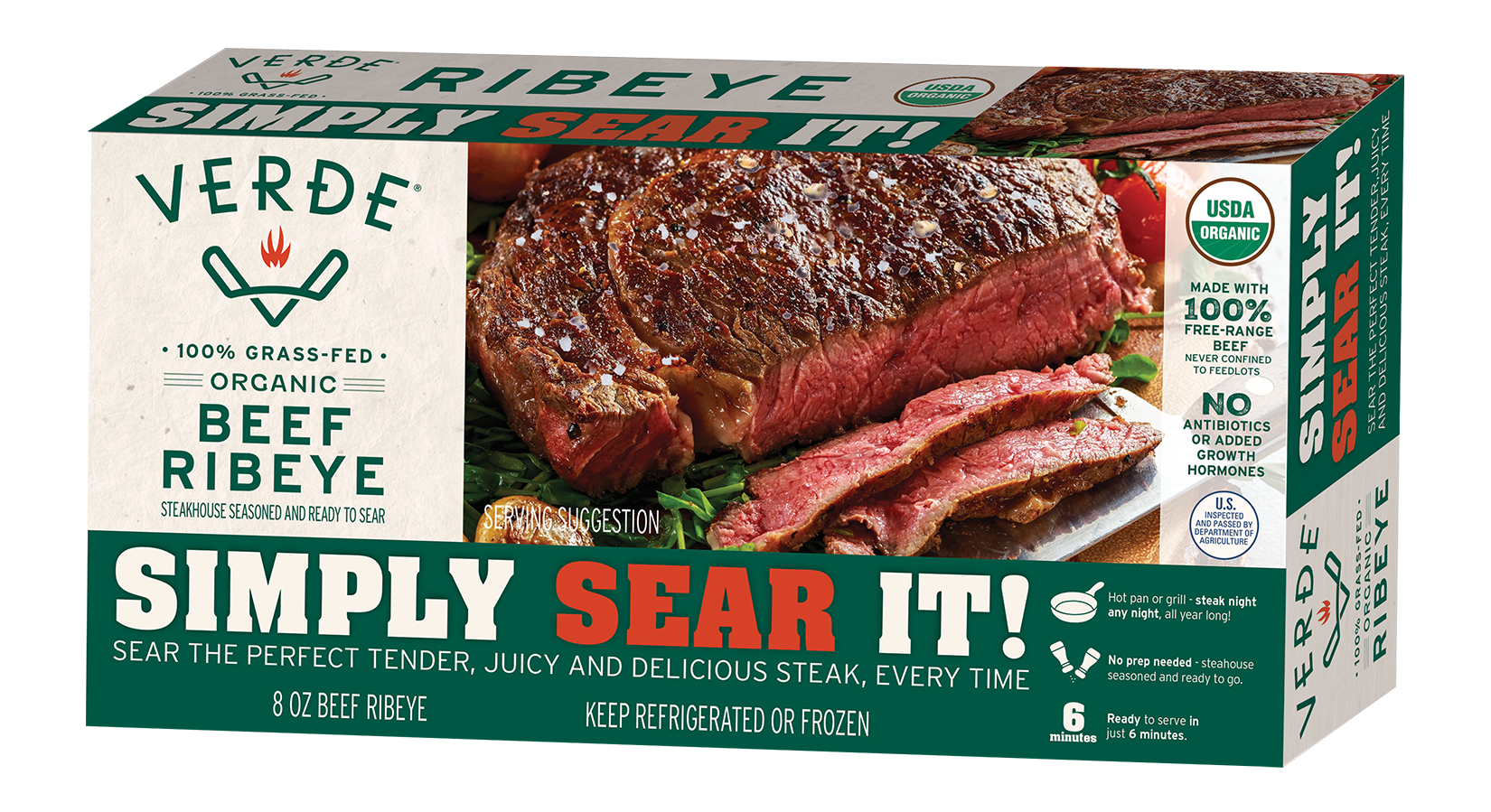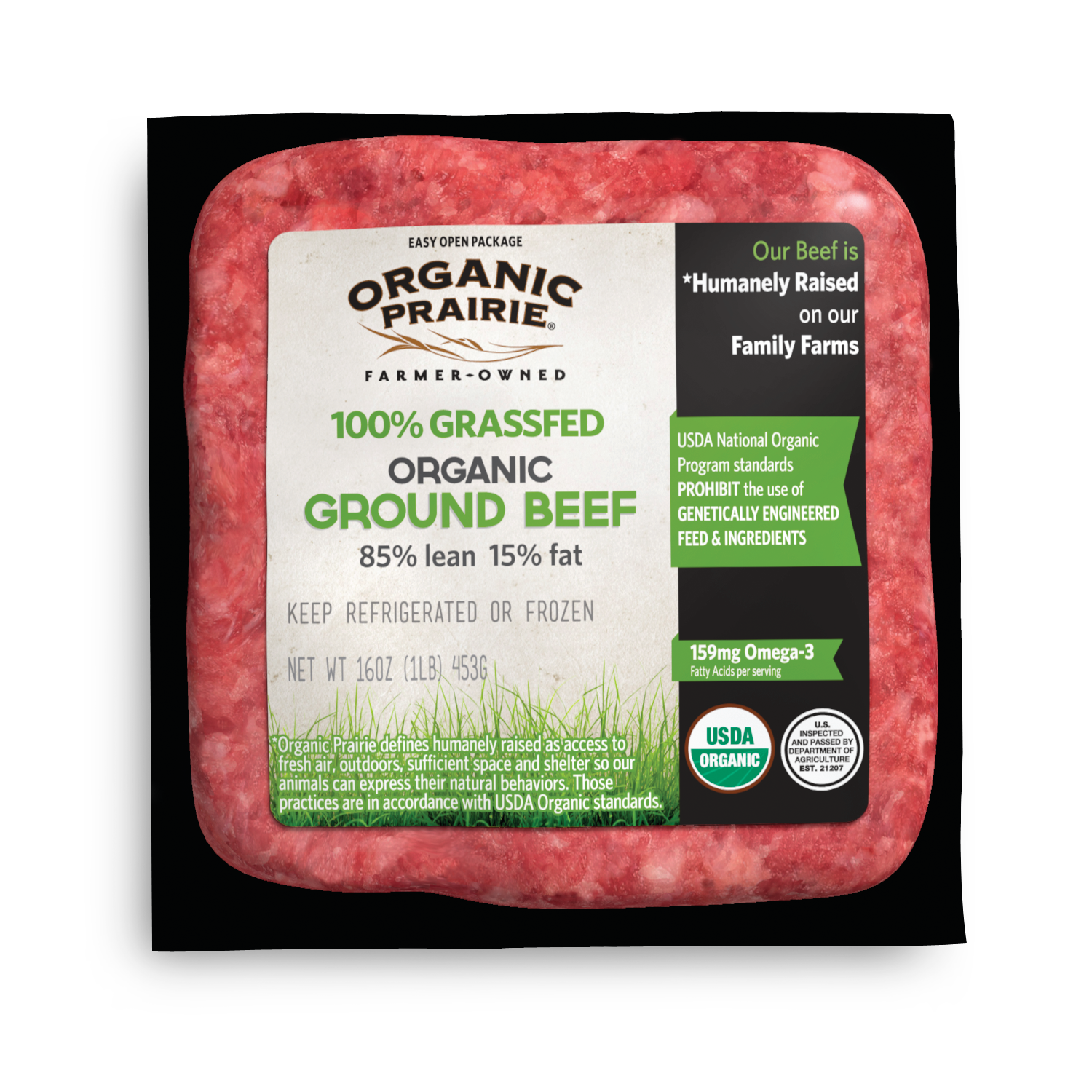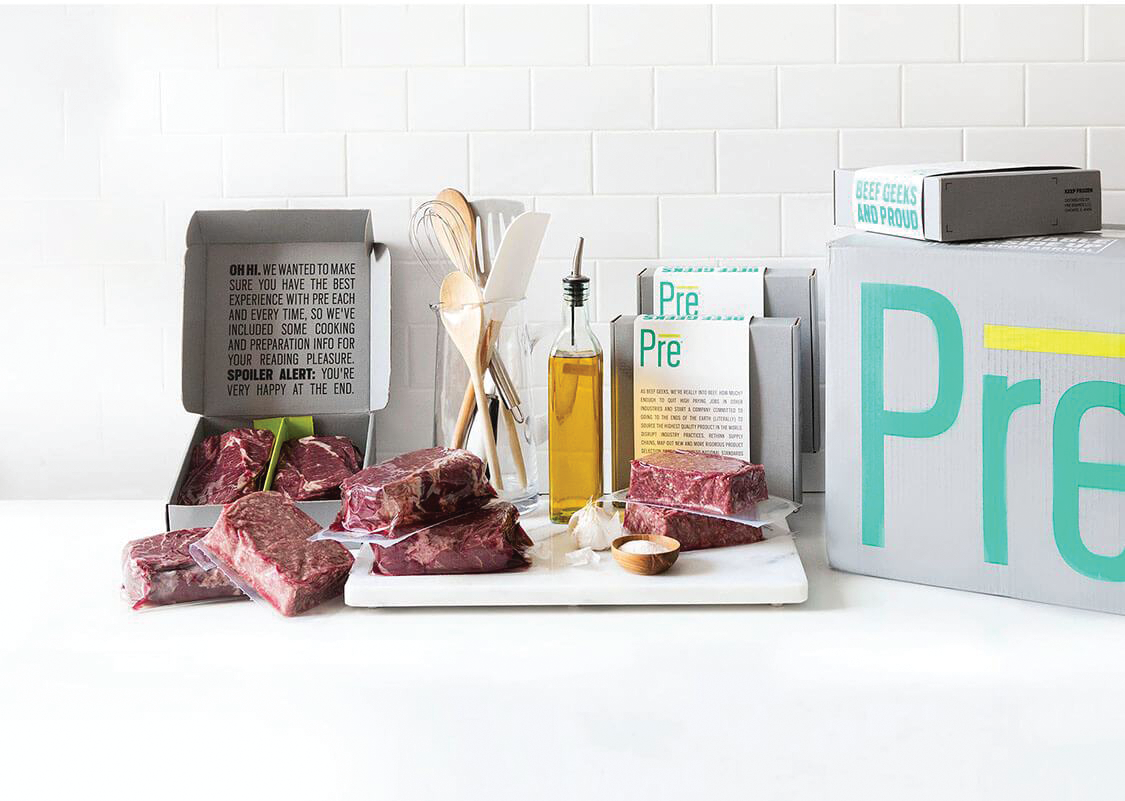In a 2020 world, consumers are continuing to lean into all-natural and sustainably raised meats and making buying decisions based upon their personal perceptions of both what is good for their health, but also kind to the earth.
Lori Dunn, vice president of business development for Franklin, Wisconsin-based Strauss Brands, which pasture raises beef, veal and lamb, notes consumers’ understanding of sustainability related to meat is evolving.
“We see increased demand for information related to production practices such as pasture-raising, regenerative grazing, water conservation, and support of American family farmers,” she says. “The footprint is definitely top of mind for our consumers and that is why our grass-fed program has experienced strong growth since inception.”
Dana Ehrlich, CEO of Woburn, Massachusetts-based Verde Farms, says the state of grass-fed is enormously positive and the category continues to grow strongly year over year and the company believes that it will continue to grow because it is still relatively under-penetrated from a retailer perspective.
“We also believe that new product innovation will create even more growth opportunity and shelf space for grass-fed beef,” he says.
According to an IRI report released in November, there has been 16.1% growth in annual dollar sales of organic grass-fed beef. The main takeaway here is that grass-fed beef has shown consistently strong growth each year, with more room to grow.
“Meat makes up the largest dollar spend in consumers’ baskets instore, and many consumers choose their grocery store based on its meat department,” Ehrlich says. “We also know that the modern consumer is looking for better for you, better for the animal, and better for the planet products and are willing to pay a premium for them. Retailers have a big opportunity now to feature their grass-fed programs to win new customers and generate incremental sales.”

Catherine Golding, business development manager for Meat & Livestock Australia/True Aussie Beef and Lamb, notes the popularity of grass-fed beef and lamb continues to grow throughout America and the industry is evolving rapidly as more producers enter the market following consumer demand for healthier, more transparent offerings.
“The overall market should climb to over $500 million annually in supermarket sales based on industry numbers we saw from Nielsen last year,” she says. “This means the growth of grass-fed beef in supermarkets will be about five times greater than the rest of the meat market, making it one of the most exciting trends seen in the supermarket perimeter.”
Still, much of this growth has come despite limited attention in supermarkets.
“As consumers seek to eat healthier and more sustainably, grocery stores can become increasingly important allies,” Golding says. “Grass-fed beef and lamb from Australia helps retailers keep interest and excitement in the meat aisle by offering products that resonate with consumers on qualities like humanely-raised, antibiotic-free, grass-fed, and organic.”
Michael Murdy, a food scientist currently enrolled in the UC Davis Food Science program, believes the “grass-fed” stamp has become the new “gluten-free” label for carnivores.
“While the vegetarian/vegan movement has not lost its footing, the health benefits of keto/paleo/carnivore diets have brought with it an influx of consumers looking for high-quality meats,” he says. “Grocery stores invest in what the consumers want, and there is no debate here, grass-fed is a healthier alternative to grain-fed meat.”
Where grass-fed meat was a luxury only high-grade grocery outlets supplied, you can now find grass-fed meat in just about every grocery chain out there.
“While all grocery stores differ, beef is still the prevailing winner in grass-fed varieties,” Murdy says. “Chicken and lamb come in second, and pork in third. But with a growing number of concerned meat-eaters, it’s just a matter of time before places like Raley's, Whole Foods and Sprouts offer grass-fed pork.”
Pete Bassett, vice president of sales for La Farge, Wisconsin-based Organic Valley, notes the grass-fed beef and pasture raised beef industry continues to enjoy double-digit growth, with product coming from U.S., Australia and Uruguay, and the company has seen a higher interest in the market for U.S. grass-fed beef.
“We don’t expect that trend to change anytime soon because consumers are increasingly becoming more educated on the nutritional benefits of grass-fed products in terms of higher Omega 3 and CLA levels,” he says. “We continue to build our lineup of grass-fed offerings in all categories under the Organic Valley, Organic Prairie, and Mighty brands.”
Connecting with Consumers
Nicole Schumacher, chief marketing officer of Chicago-based Pre Brands LLC, says consumers are getting a lot smarter about what they are putting into their bodies and they know the difference between meat that is grass-fed or not.

“That’s important to them and because of that, we see this category as continuing to see positive growth momentum as we go through 2020 and beyond,” she says. “It’s important to educate the consumer at each touchpoint because a lot of people still don’t understand what being grass-fed means exactly.”
Daniel Levine, director of the Avant-Guide Institute, a global trends consultancy in New York City, is bullish on the grass-fed meat and poultry industries.
“From the consumers’ perspective, grass-fed offers a perceived improvement in both animal welfare and the quality of the product,” he says. “For these reasons, retailers should be highlighting those aspects of the products they sell. I believe that the most powerful way of doing this is by pairing clear imagery with even more transparent information about where the meat is from and how it was raised.”
Grass-fed and pasture-raised beef and poultry is important because of the consumer mind frame of “it’s better for us and better for the environment production.”
“Consumers are educating themselves on the nutritional and environmental benefits and are making better choices in what they put in their body,” Bassett says. “As regenerative agriculture continues to gain momentum, we continue to focus on all the benefits of organic grass-fed beef. We like to tell the complete story. It’s better for the animals, humans, and the earth. Healthier pastures = healthier animals = healthier humans.”
Ehrlich says consumers have an ever-expanding desire to make purchase decisions that reflect their values. They want to eat healthy, minimize their impact on the environment, and they want animals to be treated well. And they’re willing to pay more for products from companies that deliver on that promise.
“They’re also looking for real food with honest, transparent, simple ingredients that are connected to their origins and don’t require a chemistry degree to be correctly pronounced,” he says.
When Whole Foods released its Top 10 food trends for 2020, “regenerative agriculture” was included as a major focus. Science has shown that regenerative agriculture, especially pasture raising cattle on lands that would otherwise not support agricultural crops, reduces the environmental impact down to near zero. Animals raised on pasture are also happier, healthier and higher in nutrients than those from intensive feeding operations.
That’s the “better for you, better for the animal, and better for the planet” that consumers are looking for.
Stores Need to Get On Board
Supermarkets have learned that a combination of education and quality products help achieve a successful grass-fed program.
“When it comes to the success of our retail customers, we work as a fully integrated partner to help inform instore programs through data-driven insights, collaborative marketing, and educational materials for their sales team and consumers,” Ehrlich says. “While grass-fed is a growing part of their meat department sales, it represents a relatively smaller percentage of those sales. So, having a partner that is committed to growing their sales and keeping a close eye on the business is something we believe is critical to success. Our customers agree.”
He believes retailers should actively promote their organic and grass-fed options with storytelling and compelling imagery that show the products’ true origins. To that end, Verde partners with customers on signage, promotions and demos to drive awareness and new trial, and provide educational content, recipes, cooking demos and images for them to cross-promote the products on their social channels.

“Consumers should be left with a sense of place and confidence that the product they are buying is authentic,” he says. “Highlighting products’ better-for-you facts and brand missions has also been essential for our retail partners to connect with customers on a personal level.”
A recent U.S. Beef Shopper Journey Study conducted by Meat & Livestock Australia indicated that only 60% of shoppers believe their stores carry grass-fed beef, and a whopping 31% didn’t know.
“Since we know most retailers sell grass-fed beef, messaging instore is a significant opportunity for retailers to step up to meet marketplace trends and capture more growth,” Golding says. “We’ve seen retailers who set up the display case right—beyond just an attractive display—by highlighting grass-fed and communicating benefits to increase shopper knowledge, which can increase sales significantly.”
If a retailer doesn’t currently offer a quality-based grass-fed option, it’s important that they take a look at their lost revenue opportunity.
“Too often, we assume the grass-fed consumer is a young millennial,” Dunn says. “That certainly is one segment, but, even more important is the fact that a lot of boomers and Gen Xers with high household income levels are purchasing grass-fed beef. These folks are often spending more while purchasing less, focusing on quality over quantity.”
If retailers are looking for a place to start, she suggests grinds and burgers are sure wins to grow a program.
Dunn notes consumers want to be able to purchase products with ease, and not have to search them out, so a trusted brand name in their favorite retailer’s meat case is key to initiate trust and trial.
“Many times, consumers have tried multiple different grass-fed brands before they find the one they like,” she says. “Consumers are reading labels to be sure products are actually raised in the USA. A quality American-raised grass-fed beef program can taste just as great as traditional grain finished. Consumers’ expectations are rising, and we must keep up.”
